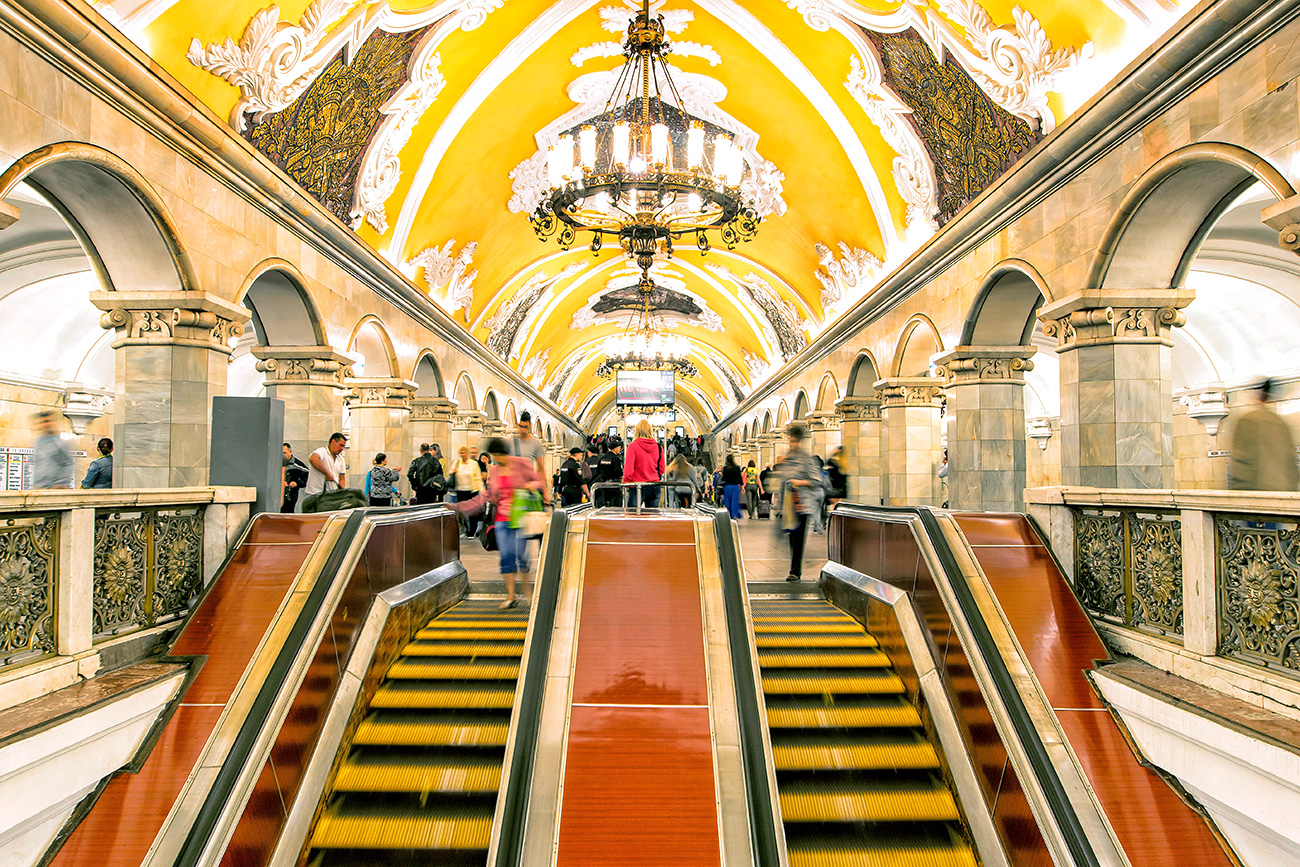
Komsomolskaya station was constructed to act as a type of “gateway” to Moscow.
Legion Media Komsomolskaya station was constructed to act as a type of “gateway” to Moscow. / Legion Media
Komsomolskaya station was constructed to act as a type of “gateway” to Moscow. / Legion Media
The Moscow Metro is known all over the world for being the largest underground museum. Many of the stations were luxuriously designed and decorated by leading Soviet artists and sculptors in the Stalinist Empire style as a demonstration of the power and wealth of the Soviet Union.
At the center of the map of Moscow’s metro system there is a ring line, consisting of 12 stations with continuously running trains that circle the heart of the city. This line was constructed following the Second World War, and the decoration glorifies the military might of the Russian people. Almost every station has architecture of cultural significance. In order to experience the art, you only need to enter the metro one time. As you ride around the ring line, exit the metro car, take some time to view the art and architecture at each stop and, without transferring or exiting the station, get on the next train until you reach the next stop. RBTH is ready to guide you on this tour of the five most interesting stations of this underground museum.
 Park Kultury. / Legion Media
Park Kultury. / Legion Media
This station leads to Moscow’s main park, Gorky Park. The station includes five types of marble, from veined light gray to black, and other features, such as empire chandeliers and marble bas-reliefs.
 Park Kultury. / Legion Media
Park Kultury. / Legion Media
These bas-reliefs were made according to the sketches of Isaac Rabinovich, who also decorated the USSR pavilion at the 1939 World’s Fair in New York.
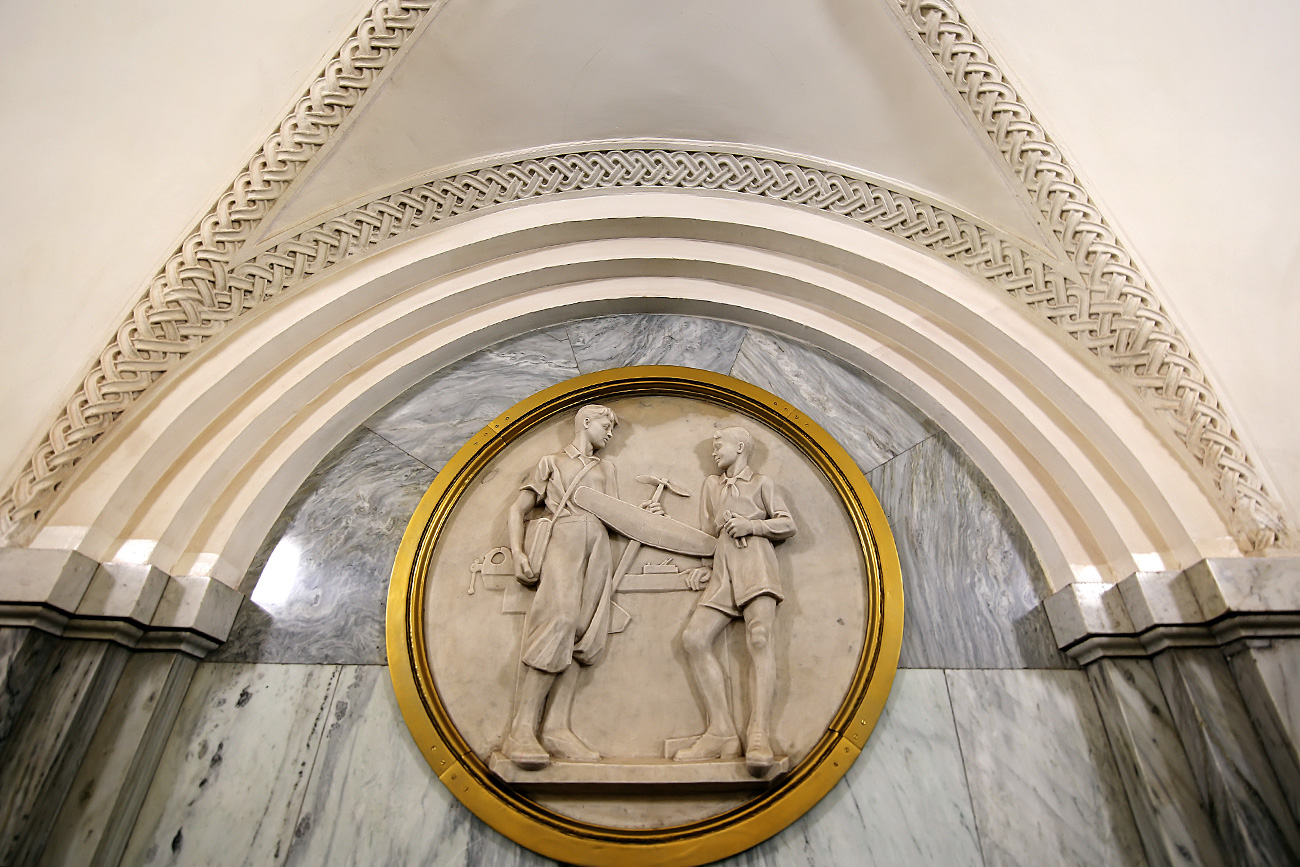 Park Kultury. / Legion Media
Park Kultury. / Legion Media
They depict the labor and leisure activities of the Soviet people, as well as the types of activities they participated in at the famous Gorky Park, including flying model planes, dancing and playing football and tennis.
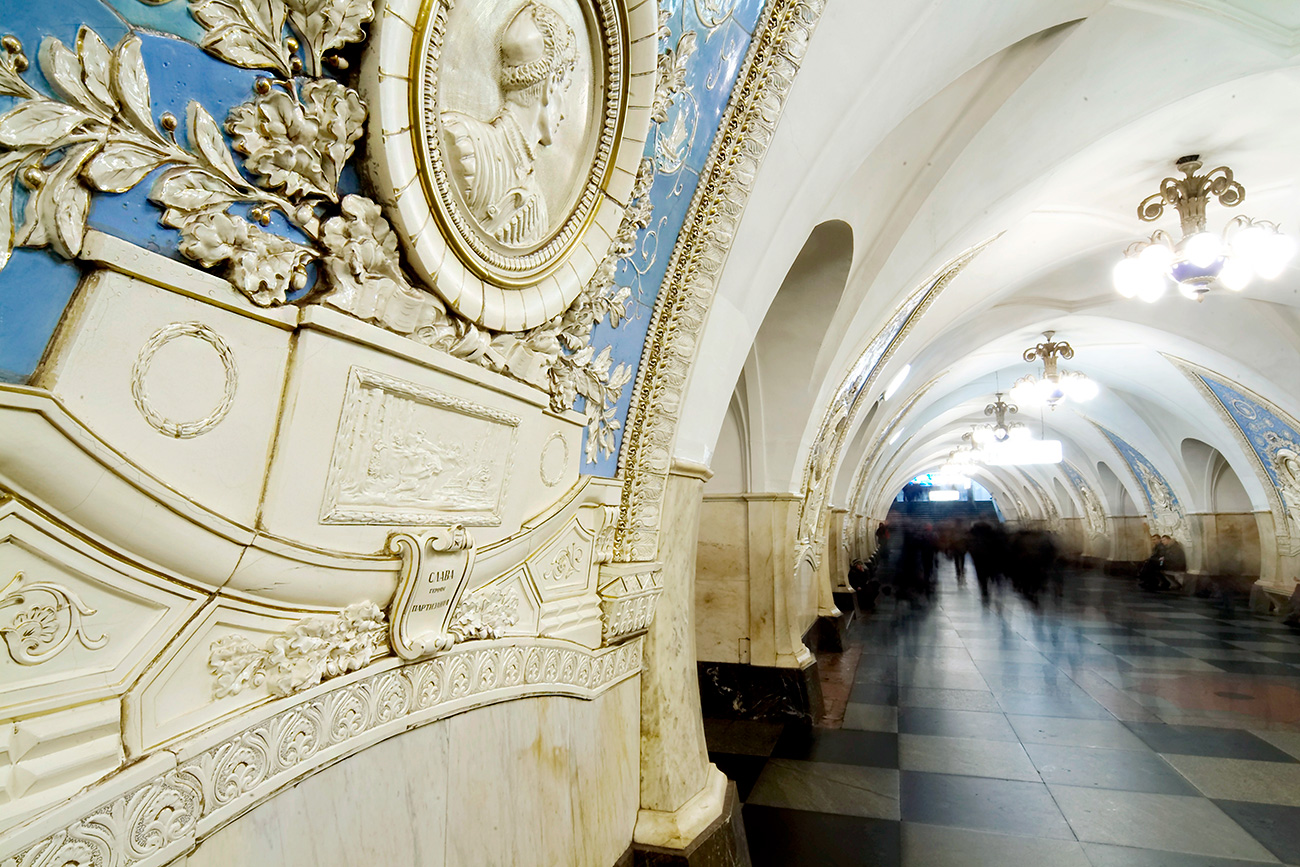 Taganskaya. / Konstantin Kokoshkin/Global Look Press
Taganskaya. / Konstantin Kokoshkin/Global Look Press
Medieval architecture is the main theme of this station's design. Intersections of arches create a kind of cross vault similar to those found in Russian boyar chambers from the 13th to 16th centuries.
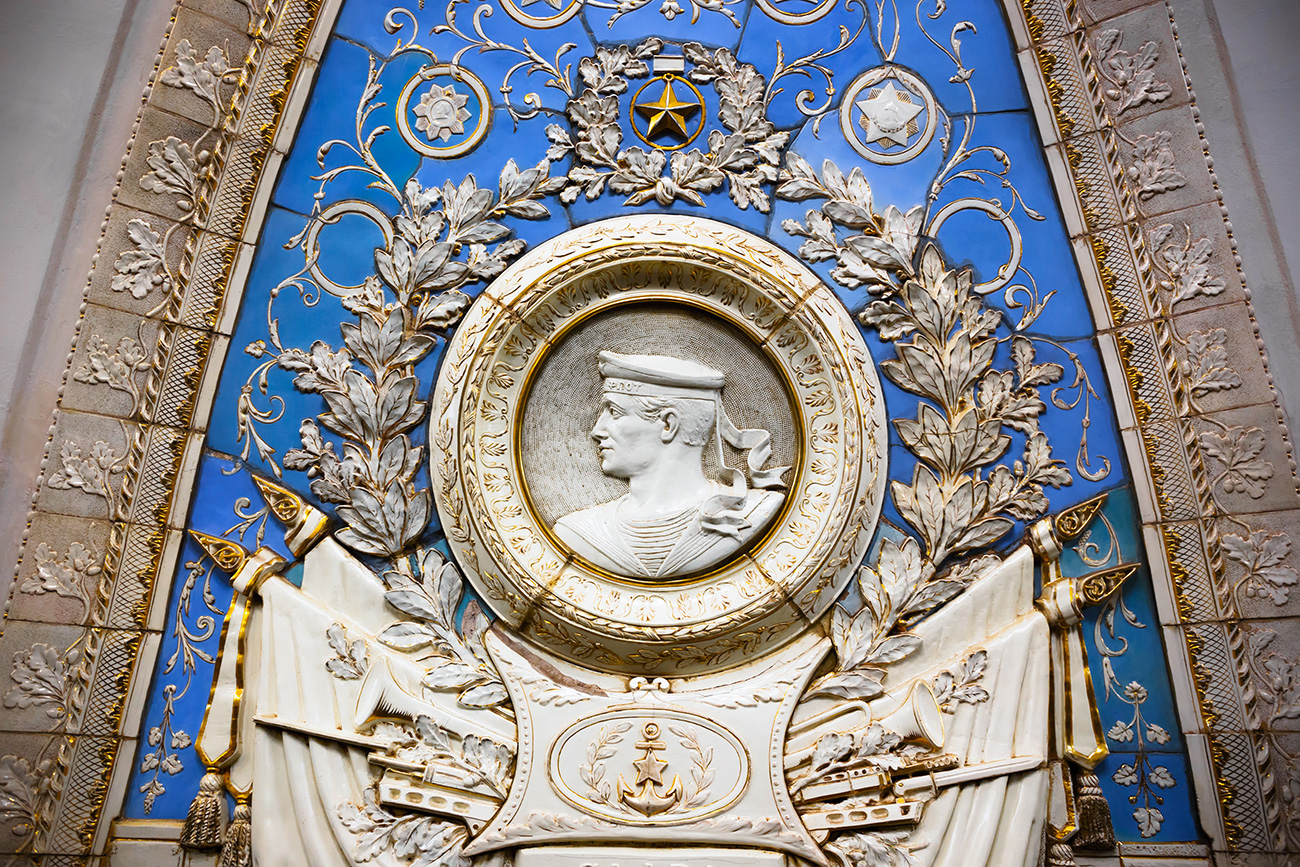 Taganskaya. / Legion Media
Taganskaya. / Legion Media
The pillars are generously decorated with majolica panels, in the style of the studio of Andrea della Robbia, the famous Florentine sculptor of the 16th century.
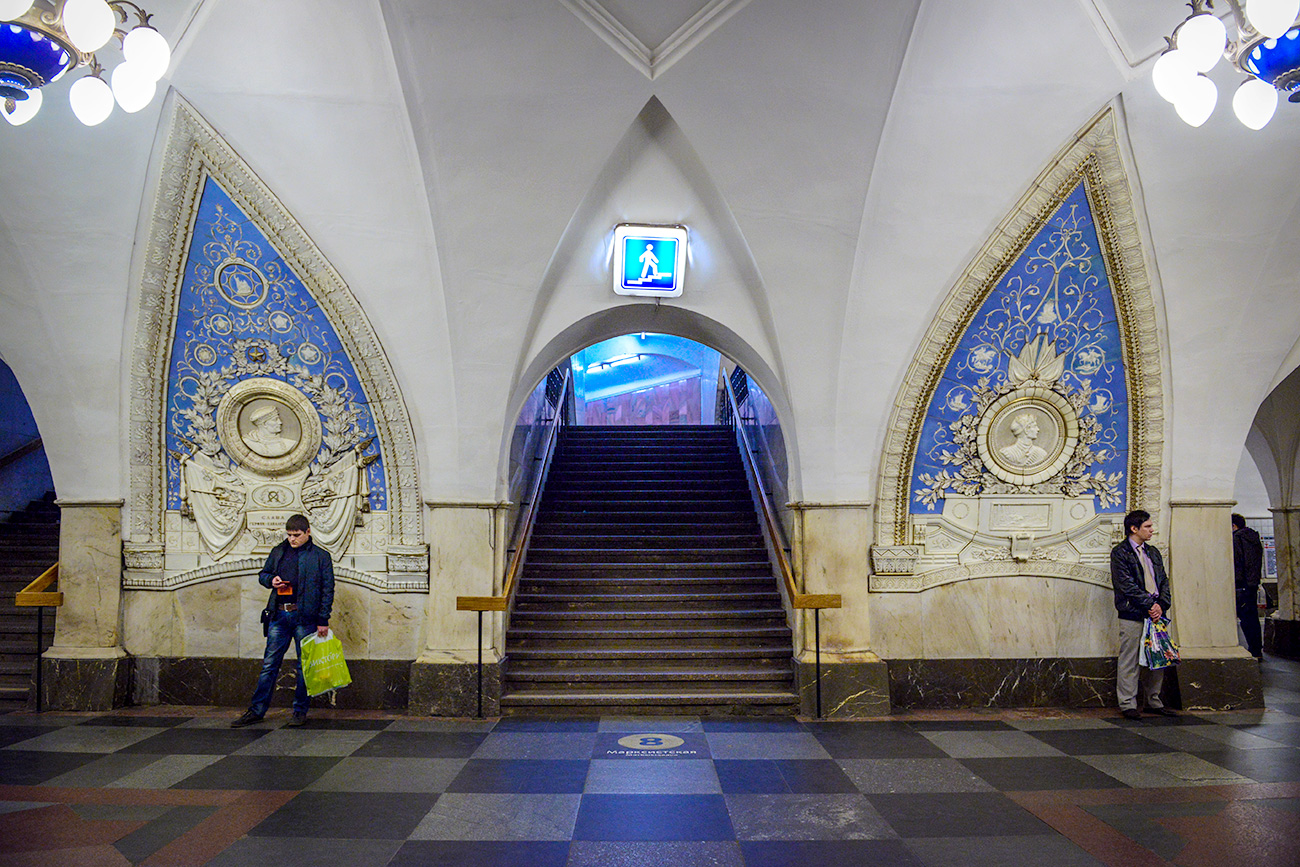 Taganskaya. / Nikolai Galkin/TASS
Taganskaya. / Nikolai Galkin/TASS
However, instead of featuring images of Madonna, you will find profiles of heroes of the Soviet Army, such as sailors, tank operators and pilots, basking in glory with victorious banners and bayonets, painted with enamel and gilding.
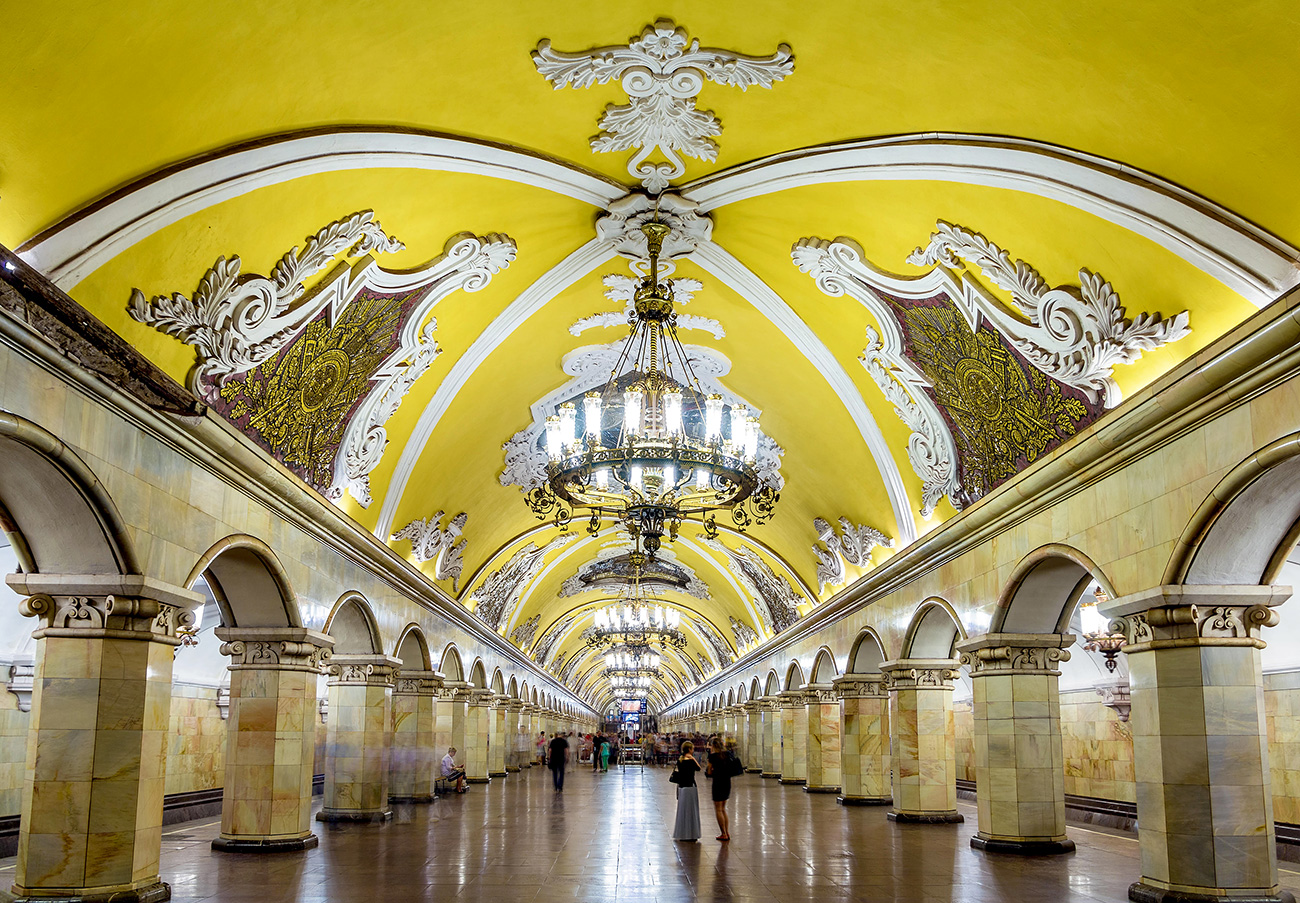 Komsomolskaya. / Legion Media
Komsomolskaya. / Legion Media
This station was constructed to act as a type of “gateway” to Moscow because it is located under the three busiest Moscow railway terminals.
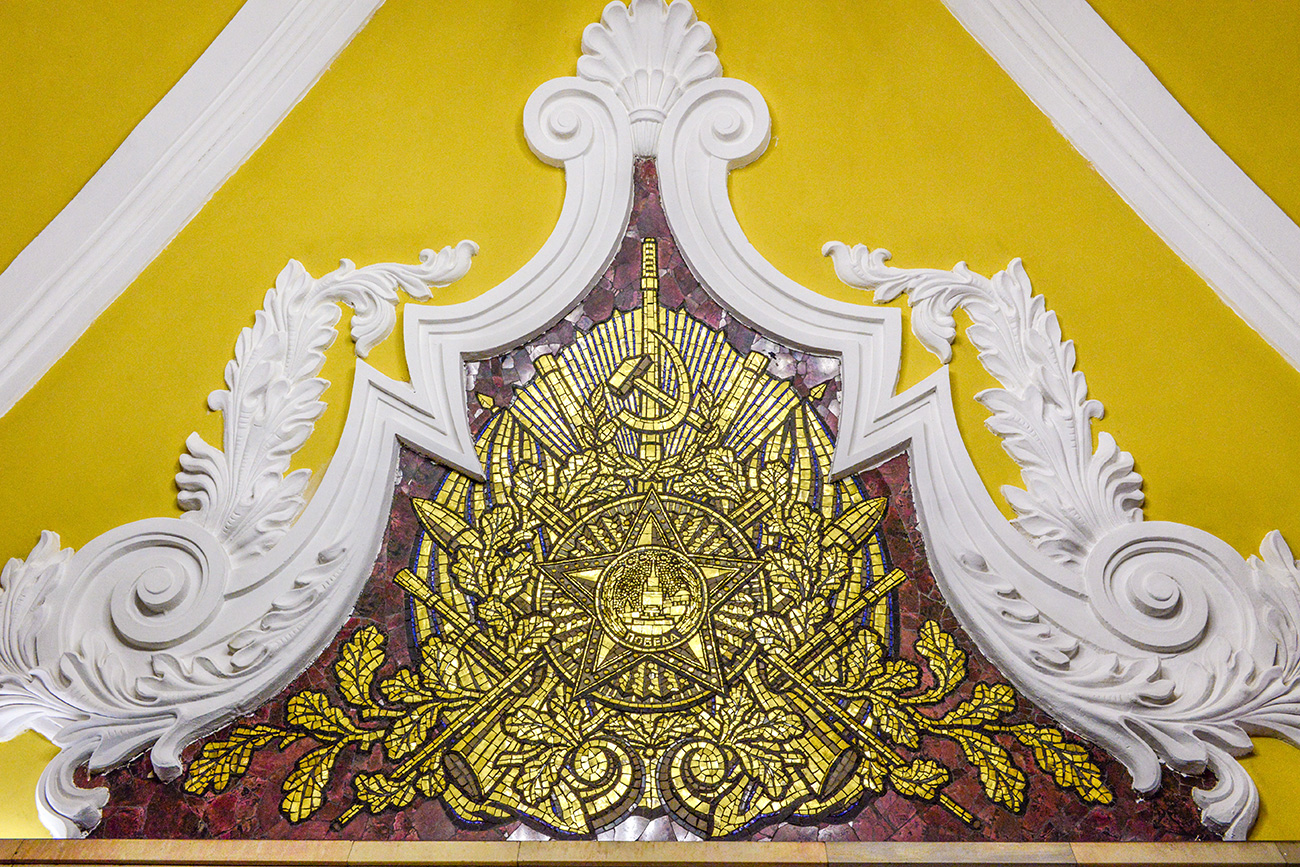 Komsomolskaya. / Nikolai Galkin/TASS
Komsomolskaya. / Nikolai Galkin/TASS
It represents the peak of the Stalinist Empire style with its elegant bronze chandeliers, marble arcades and monumental mosaics made from smalt.
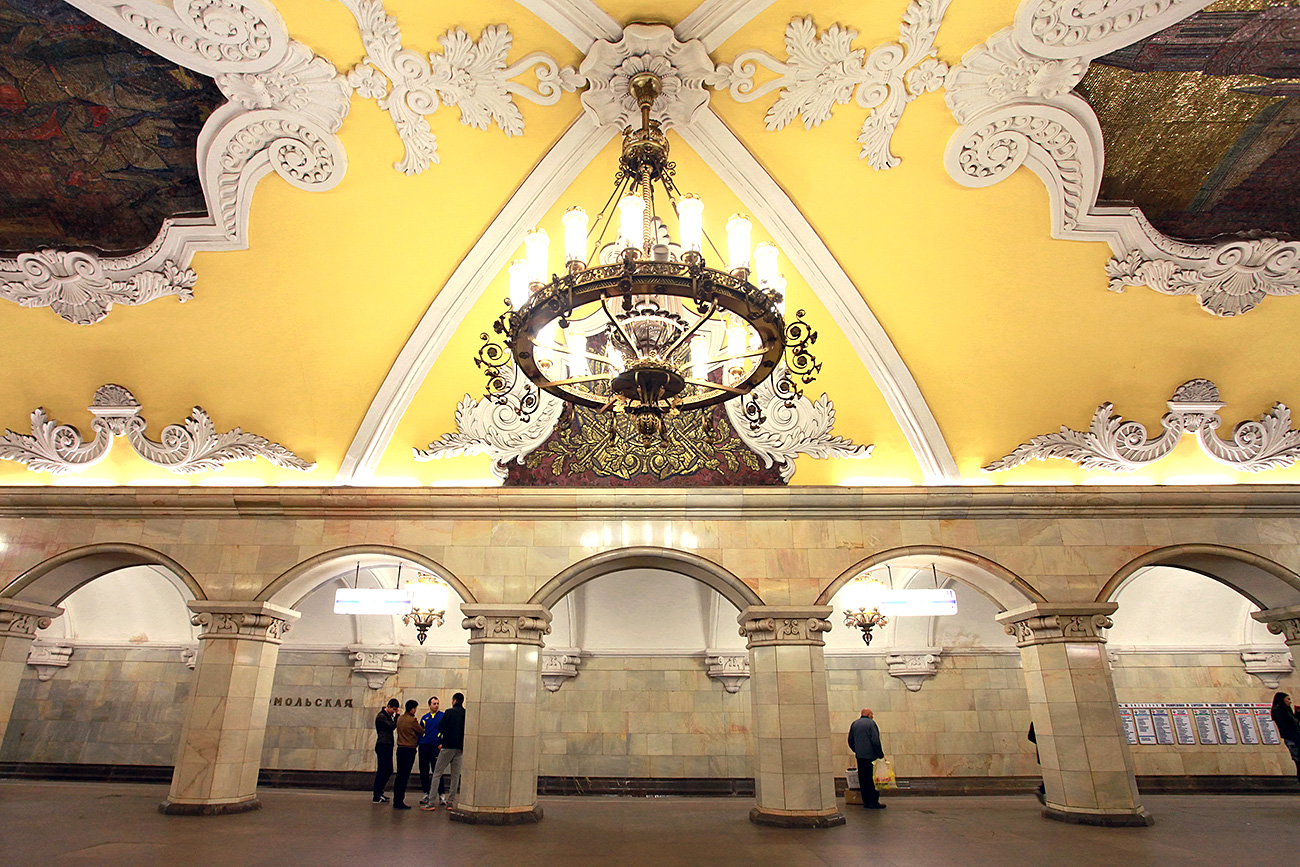 Komsomolskaya. / Legion Media
Komsomolskaya. / Legion Media
Today, the station is adorned with eight mosaic panels, designed in the style of ancient temple architecture. They depict famous Russian warriors, commanders, and the leader of the Russian Revolution, Vladimir Lenin, who is portrayed giving a speech in Red Square.
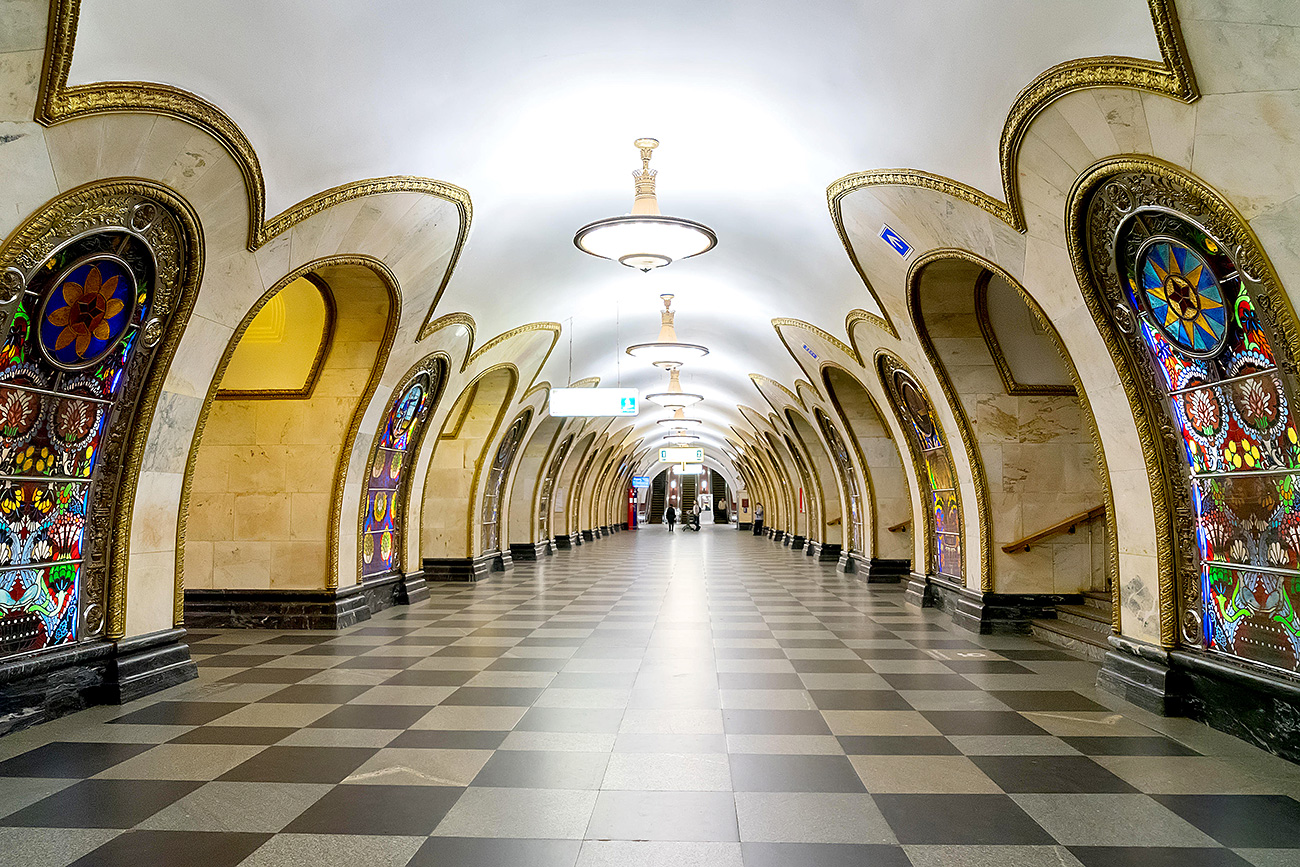 Novoslobodskaya. / Legion Media
Novoslobodskaya. / Legion Media
This is one of the most ceremonial stations in the Moscow Metro. It is best known for its 32 stained-glass panels, which were all designed by the famous Soviet artist Pavel Korin.
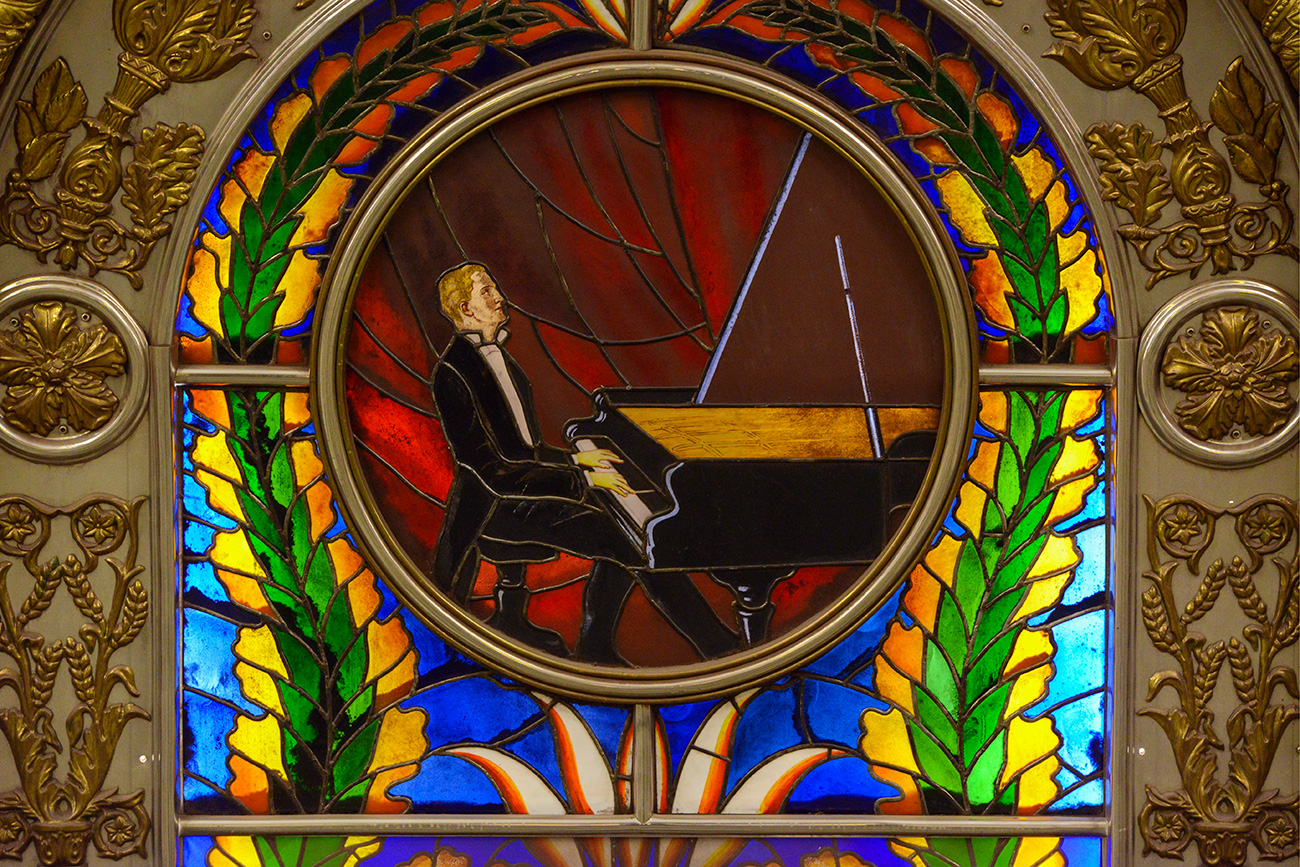 Novoslobodskaya. / Nikolai Galkin/TASS
Novoslobodskaya. / Nikolai Galkin/TASS
The stained glass windows were made in Latvia, according to Korin’s sketches, because Russia did not have a tradition of working with stained glass or any masters of the craft. Before its opening, the architects were afraid that Muscovites would associate the station with Catholic churches, but instead, they found that residents likened it to an incredible underwater world.
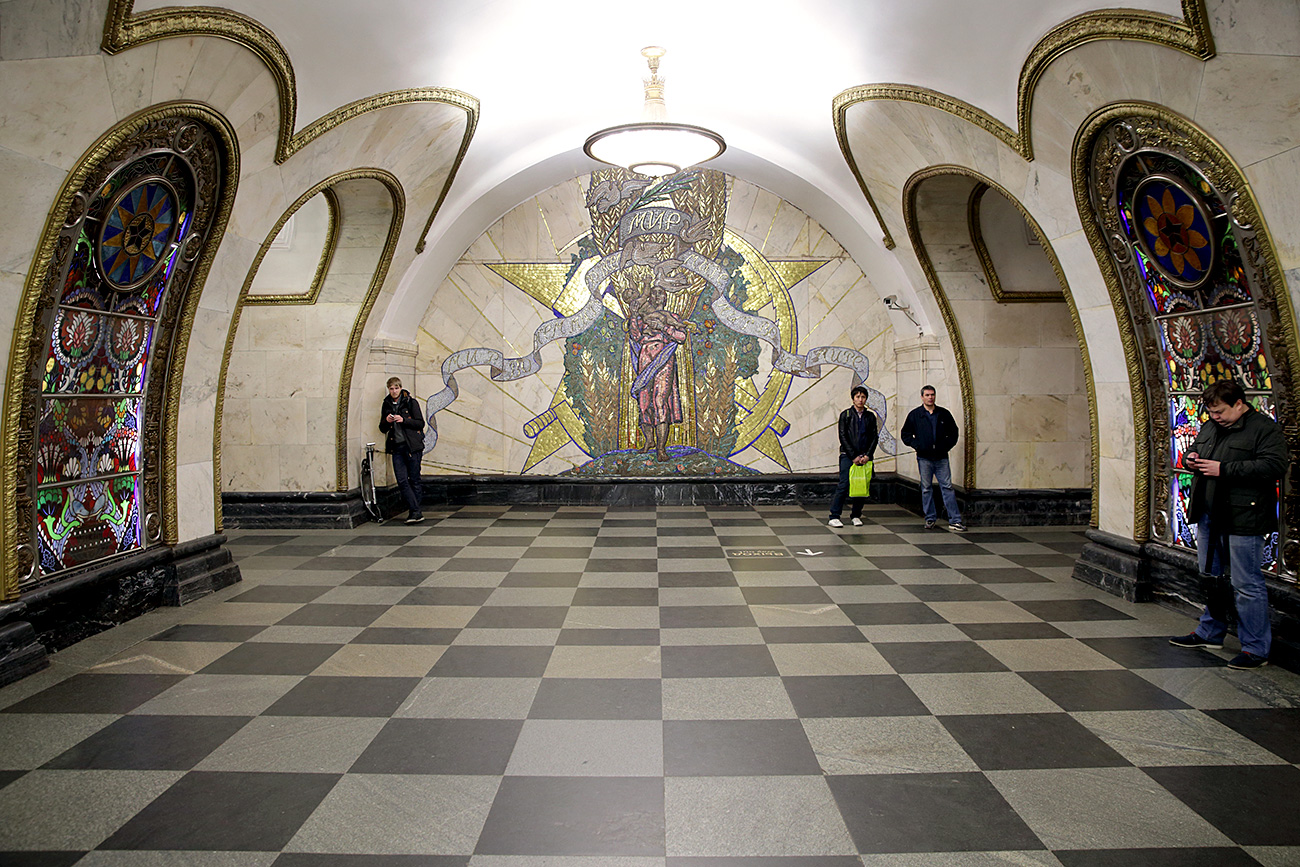 Novoslobodskaya. / Legion Media
Novoslobodskaya. / Legion Media
Six of the stained-glass panels depict people from different professions including a musician, an agronomist and, of course, an architect. The remaining 26 panels contain intricate geometric patterns and stars.
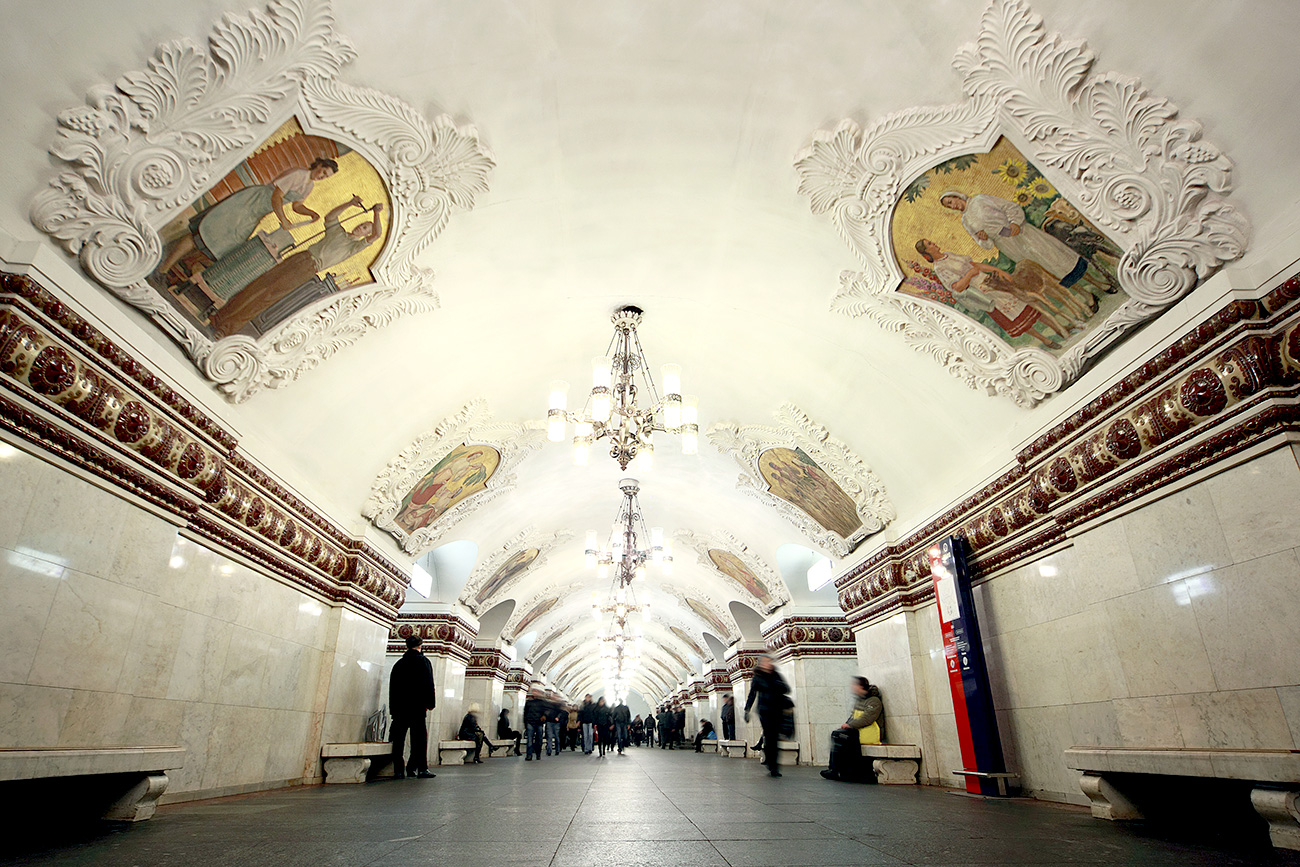 Kievskaya. / Legion Media
Kievskaya. / Legion Media
This was the last station to be built on the Moscow Central Ring. It was built under the personal supervision of General Secretary Nikita Khrushchev, who initiated the Soviet "thaw" policy and dismantled Joseph Stalin's cult of personality. It is believed that the elegant decor was a way for Khrushchev to pay tribute to his Ukrainian homeland.
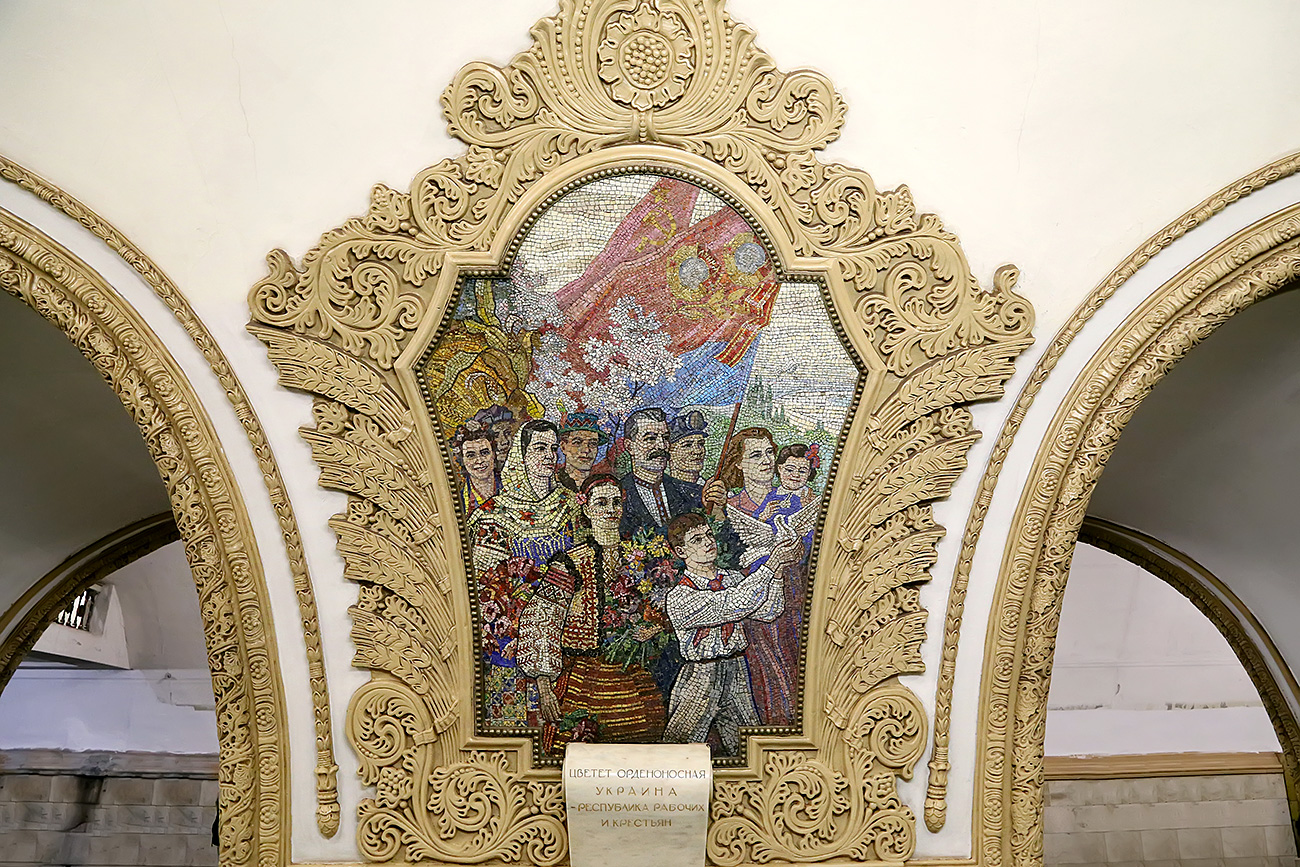 Kievskaya. / Legion Media
Kievskaya. / Legion Media
Following the opening of the station, the Soviet leader declared a "war" on excesses in architecture, thereby ensuring the unrivaled glory of this underground “palace.” Its lobby, like those at some other stations, is decorated with marble and granite, and the columns are decorated with 18 mosaic panels in the Florentine tradition.
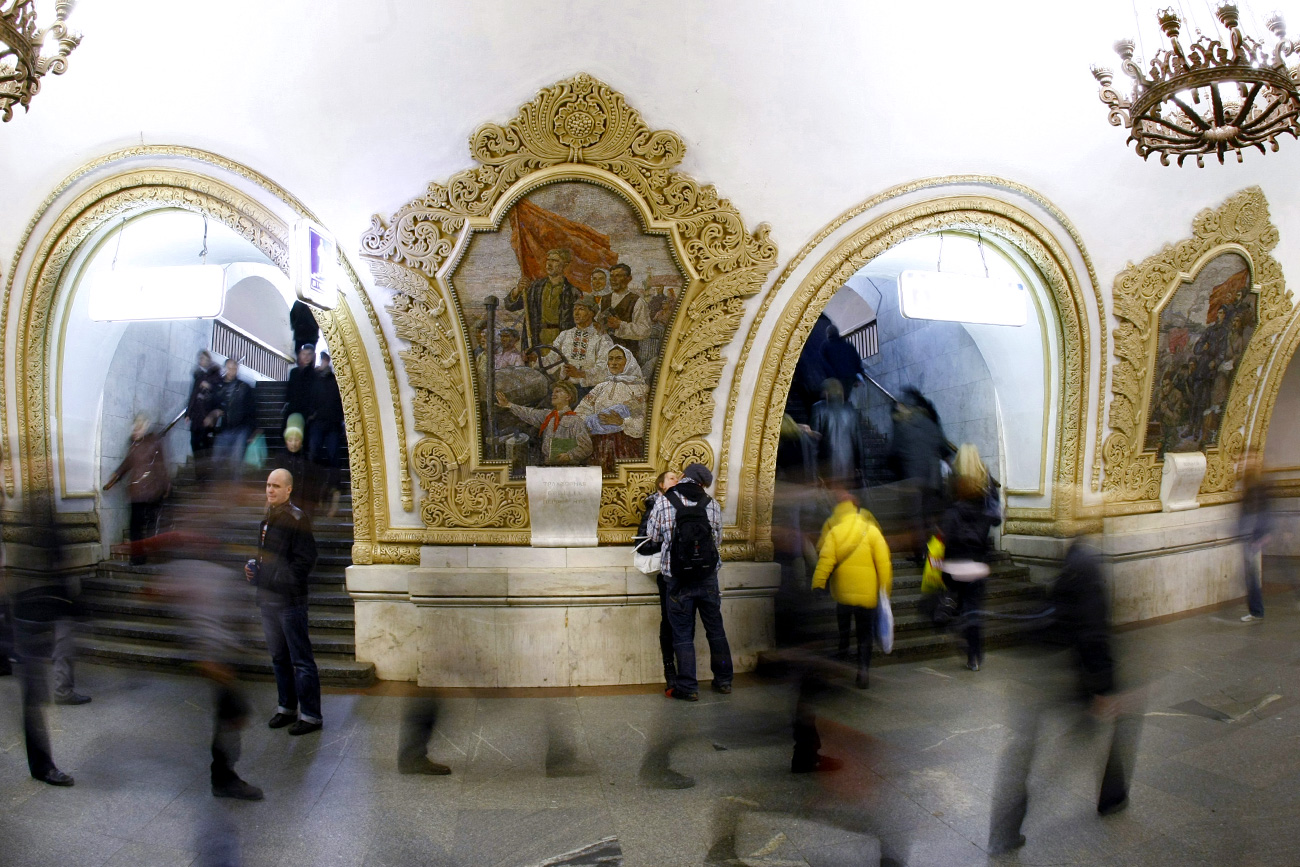 Kievskaya. / Ruslan Krivobok/RIA Novosti
Kievskaya. / Ruslan Krivobok/RIA Novosti
These bas-relief panels tell the history of relations between Russia and Ukraine, from the time of the Pereyaslav Rada in 1654 (when the Cossacks swore an oath to the Russian Tsar) to the October Revolution in 1917. The titles of the panels speak for themselves with works entitled: Pushkin in Ukraine, The Liberation of Kiev by the Soviet Army in 1943 and The Friendship of Russian and Ukrainian Collective Farmers.
If using any of Russia Beyond's content, partly or in full, always provide an active hyperlink to the original material.
Subscribe
to our newsletter!
Get the week's best stories straight to your inbox